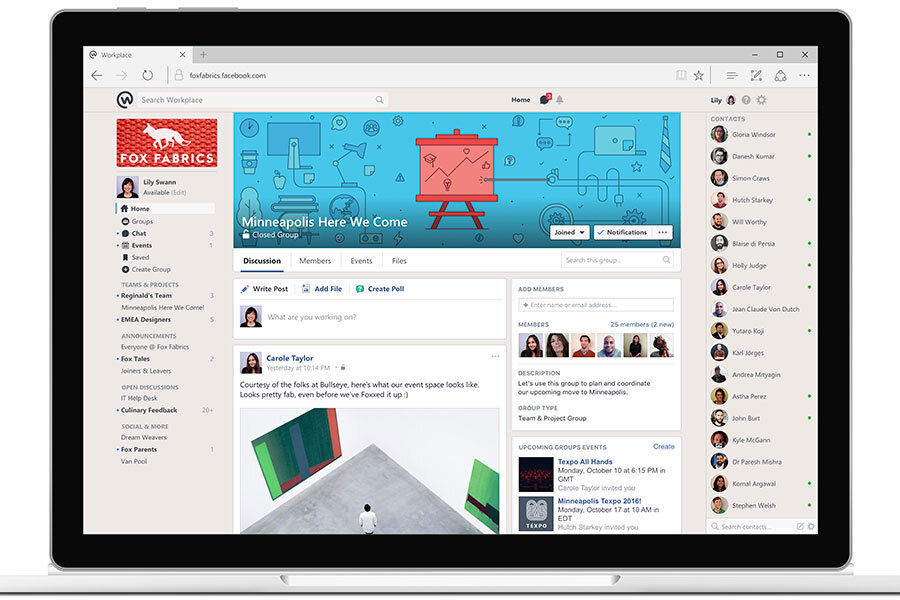Facebook Workplace: Are employers ready to embrace social media at work?
Loading...
| New York
You probably already use Facebook at work. Now, Facebook is creating a separate version aimed at helping you do actual work instead of catching up on baby photos and campaign chatter.
Facebook is launching a communications tool on Monday for businesses, nonprofits, and other organizations. Called Workplace, the platform is ad-free and not connected to users' existing Facebook accounts. Instead, businesses sign up as an organization and pay a monthly fee based on the number of users. It's free for nonprofits and educational institutions.
Julien Codorniou, head of Workplace at Facebook, said in an interview that the tool's aim is to "connect everyone" in all sorts of workplaces – from desk-bound professionals to on-the-go employees who don't have email or a computer. Think baristas at a coffee shop, field workers for a disaster-aid charity, salespeople at a clothing store or people making electronics at a factory.
Besides group chats and video calls, Workplace has live video and a news feed, much like the regular Facebook. In a departure from Facebook, the background is gray, not blue. Users can build profiles and see updates from co-workers on their news feed. As with the regular Facebook, the company will display posts that are more relevant based on its own formula. The idea is that because more than 1.7 billion people already know how to use Facebook, Workplace, which works much in the same way, will be easy to learn and use.
The idea is that because more than 1.7 billion people already know how to use Facebook, Workplace, which works much in the same way, will be easy to learn and use. The company is hoping that familiarity will give Workplace a leg up over other work-based communications tools such as LinkedIn and Slack.
Organizations have used Workplace, previously called Facebook at Work, on an invite-only basis for the past 18 months. Facebook says more than 1,000 places use it, up from 450 six months ago. They include the nonprofit Oxfam, the Royal Bank of Scotland, the soup maker Campbell's, and the vacation rental site Booking.com. The tool itself, though, has been in the works for much longer; it's based on an internal service that the company's own employees have been using for almost as long as Facebook has existed.
Facebook says the top five countries now using Workplace are India, Norway, the United States, Britain, and France. Workplace is available worldwide. About 85 percent Facebook's user base is outside of the U.S. and Canada.
For one to 1,000 active users, Workplace will cost $3 per user per month. The cost declines with more users, so for 1,001 to 10,000, it'll cost $2, and $1 for more than 10,000 monthly users. Facebook says it won't charge for inactive users.
By comparison, Slack, a messaging and group call service, costs $6.67 per user per month for a standard version. Slack is also available for free to try out, and an enterprise version, aimed at entire organizations rather than smaller teams, is in the works. There won't be an unlimited free version of Facebook's Workplace for businesses, though the company is offering a 3-month free trial.







